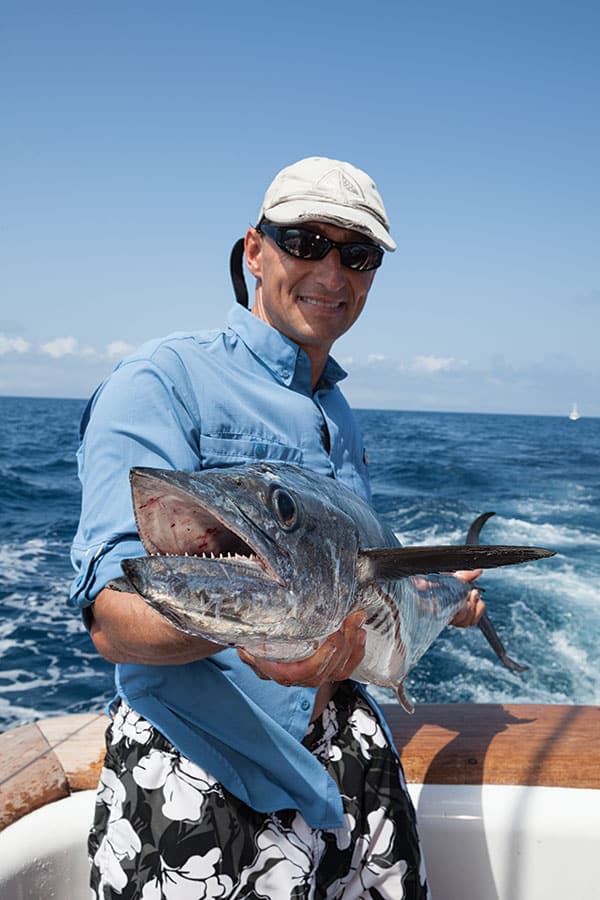
On the highly competitive stage of the king mackerel circuit, few have enjoyed a brighter spotlight than Brant McMullan and Team OIFC. Brother Barrett and father Rube are core partners, and the McMullans have twice earned top honors as the national team of the year in the Southern Kingfish Association. In 2009 they landed the largest fish ever recorded in the Open Class division, a whopping 74.1-pound king. The trio repeated as champs again in 2011 with a two-fish aggregate weight of 102.7 pounds. Based in Ocean Isle, North Carolina, they are as adept at fishing the Gulf of Mexico as their home waters. I caught up with Brant to learn the team’s secrets.
Keep It Simple
The McMullans run a 32-foot -Yellowfin center console powered by twin Yamaha F300 four-stroke outboards. The hard-core boat is rigged for serious tournament competition.
“Things breaking on the water is bad,” McMullan explains, “so we operate with the keep-it-simple approach. It’s all about the bait. We have built-in tuna tubes, extra aeration in the livewells, and will sometimes carry a 500-gallon auxiliary tank to transport large quantities of bait.”
The boat is equipped with minimal electronics, also for simplicity. A GPS/chart plotter, fish finder and marine VHF radio are the only components installed, although Sirius Weather is loaded on the plotter to keep track of approaching storms.
Advance Scouting
“Prefishing a tournament is painful with us,” McMullan explains. “We spend a lot of time running around and very little fishing. We work the edges, looking for anomalies, and hunt for places where the fish aren’t. If we find them where they shouldn’t be, away from the known spots, we have an advantage.
“We might cover 500 miles in the couple of days beforehand looking at a lot of water. We’re checking out the color, searching for bait, and just looking for fish. The more we see, the better. But we don’t want to catch a big one right before a tournament and mess up our karma.
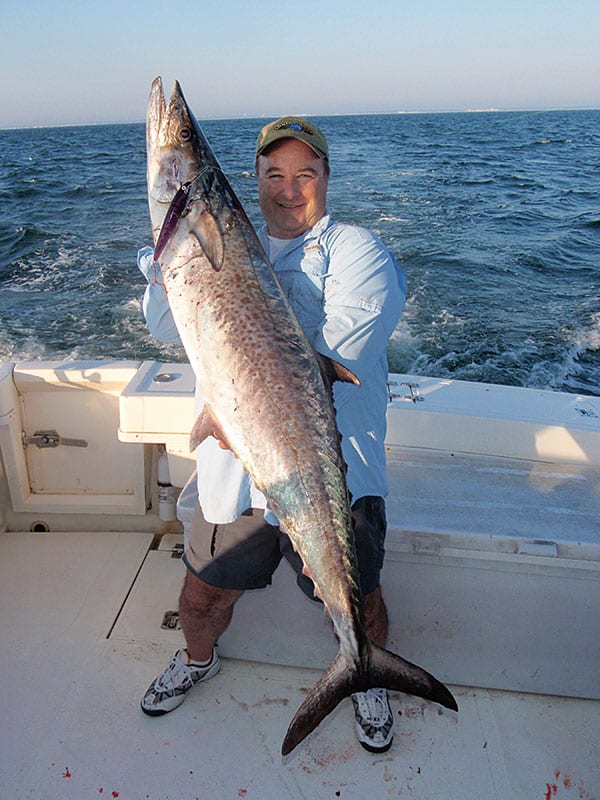
Trust Your Instincts
McMullan isn’t as concerned about water clarity and temperature as he is other natural indicators. The team has caught big kings in blue water, dirty brown and the preferred green tints in the normal depths of 100 to 120 feet, and with temperatures around 72 degrees. They do trust their instincts though.
“When we caught the big king in ’09, we ran out of bait after going through more than 50. So we made the decision to rebait to try for a bigger fish. We caught a few baits, but as we were running back to our spot, we saw about a half-dozen pelicans in the middle of nowhere, circling and diving, so we ran over. The birds were on a ball of menhaden the size of a house. We threw the cast net and almost couldn’t get it in, it was so full. Kings were skying everywhere; there were sharks and just an incredible amount of life. And that’s where we found the big one. It was nothing magical — we just followed our instincts, and it paid off.”
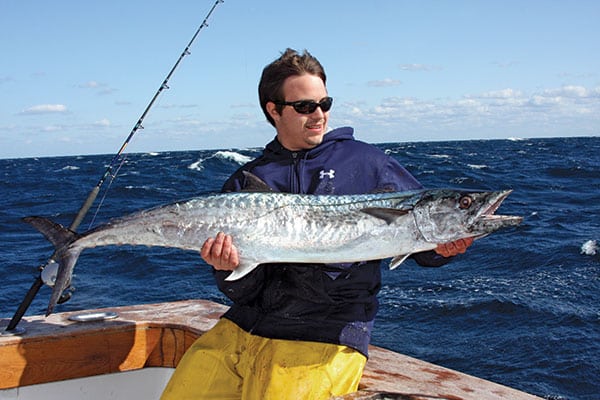
Bigger Is Better
If they’re fishing the East Coast, menhaden, or pogies, are usually the preferred bait, with bluefish a favorite fallback. Blue runners, or hardtails, are the bait of choice in the Gulf. Ribbonfish are slow-trolled when the bite is especially slow. The McMullans believe in natural presentations. They add only a single skirted bait to the spread to give a different look on rare occasions.
“We live by the big-bait, big-fish theory,” Brant adds, “and we scale the terminal tackle to match the bait size as well as to handle bigger fish.”
Soft Touch
Team OIFC’s tackle includes 7-foot conventional live-bait rods with fast tips. The lighter tip telegraphs the action of the bait and also acts as a shock absorber during the blistering runs of a big king. Reels are spooled with 20-pound-test monofilament line tipped with 25-pound fluorocarbon leaders tied to the wire rigs.
“Never use braid with treble hooks,” McMullan explains. “You’ve got to have the stretch and shock absorption of mono to stay tight to a big fish.”
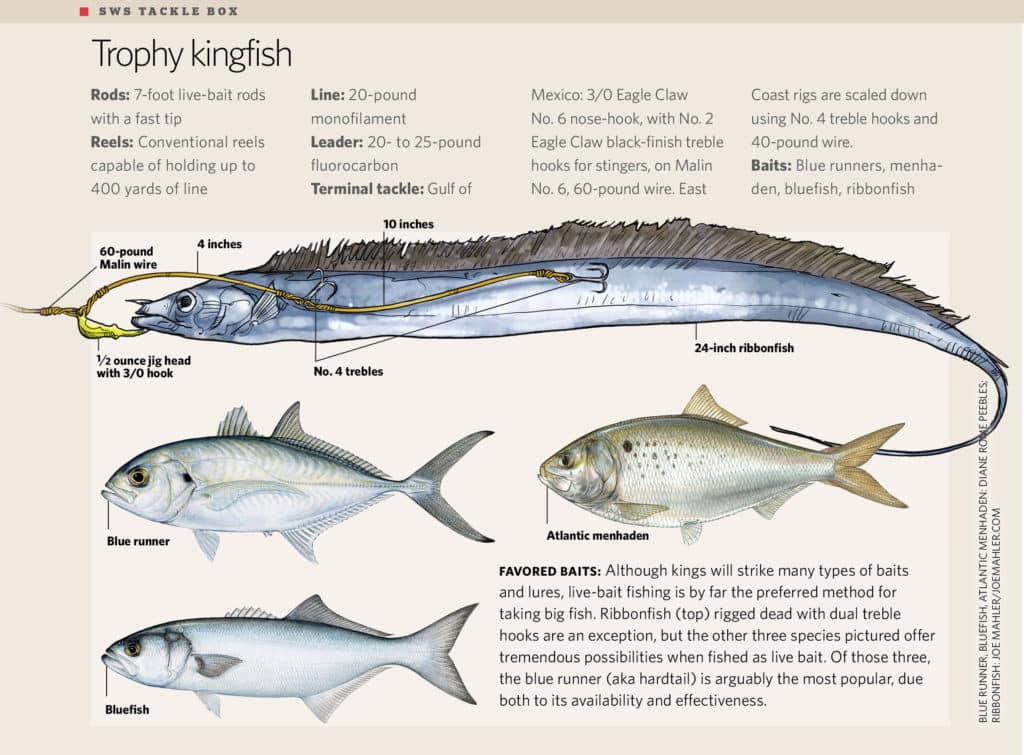
Lines In
When a big mackerel strikes, McMullan is a firm believer in leaving the other lines in the water while that fight is underway. The remaining anglers should be ready to react to additional strikes while the driver keeps trolling into the school of fish.
“We always catch bigger fish while fighting one,” he says. “The more baits you have in the water, the more chances you get.”
Finesse
McMullan says anglers often get too excited and tighten the reel drag when a big fish is taking line. That’s a mistake. Instead, he loosens the drag slightly as the fish gets farther from the boat. Once it stops and he begins to gain line, he incrementally tightens the drag.
“With a bunch of line out and too much drag pressure, something bad is bound to happen. That fish will stop eventually, so go light on the tension.”
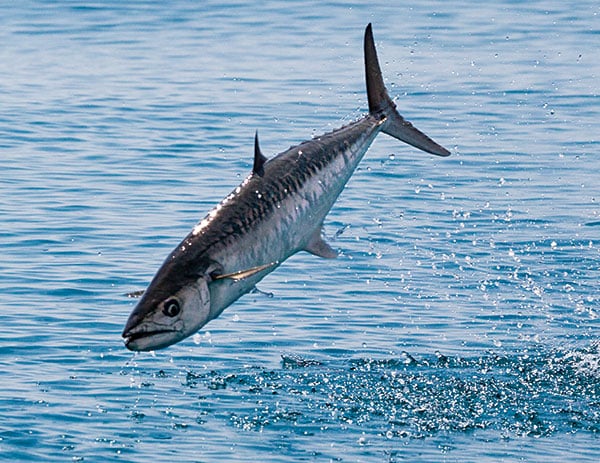
Don’t Miss
With tougher conditions in the Carolinas, McMullan feels that gives him a competitive edge, since he has to make the most of limited opportunities. Every team member knows his role and fishes with confidence, rarely losing a fish.
“You don’t win tournaments with fish stories about the big ones that got away,” he says. “You win by putting them in the boat when you have the chance. And you do that with teamwork and fast, efficient angling skills.”









